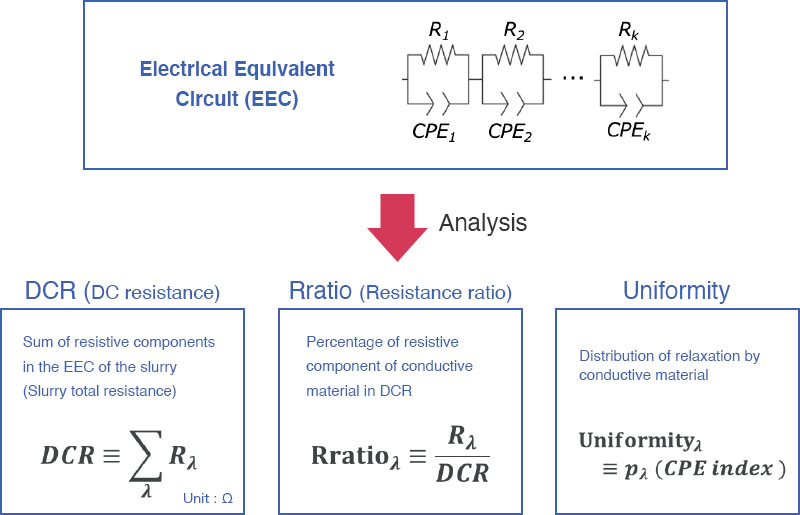[LIB Electrode Slurry Analysis] How to Calculate DCR, Rratio, and Uniformity
QHow are the DCR, Rratio, and uniformity calculated in slurry analysis?
A
Quantitative indicators of electron conductivity in the slurry are calculated using the parameters of the slurry’s electrical equivalent circuit.
The first such indicator is DCR (DC resistance). This indicator is the sum of the resistive components in the slurry’s electrical equivalent circuit, and it corresponds to the slurry’s overall resistance. It is expressed in ohms.
The second indicator is Rratio (resistance ratio). It expresses the conductive material’s resistive component as a proportion of the DCR. Its maximum value is 1, and it is expressed without units.
If a slurry yields the maximum Rratio value of 1, that result suggests that the conductive paths in the slurry have been formed from all of the conductive materials.
The third indicator is uniformity. It expresses the distribution of relaxation processes in the conductive materials by using the CPE-p value to quantify that distribution. Its maximum value is 1, and it is expressed without units.
If a slurry yields the maximum uniformity value of 1, that result suggests that all the conductive materials in the conductive paths exist in the same state.
Related Resources
- Principles of LIB Electrode Slurry Analysis: Slurry Analytical System

